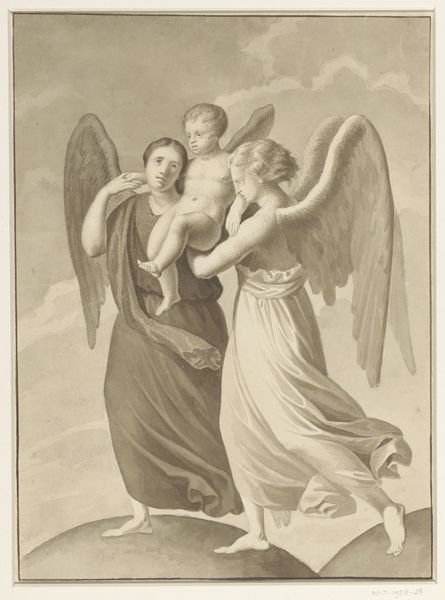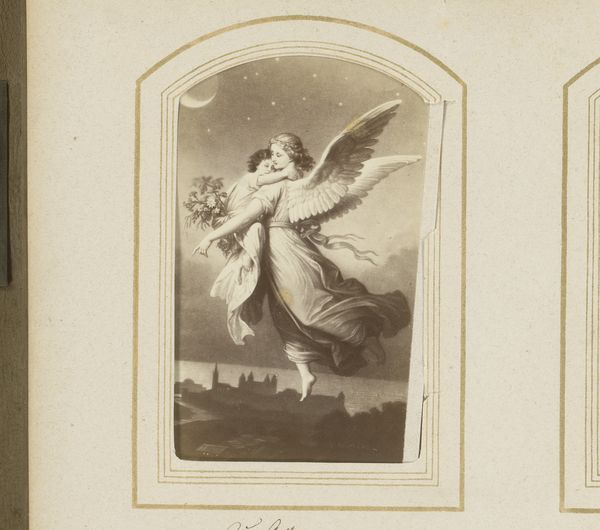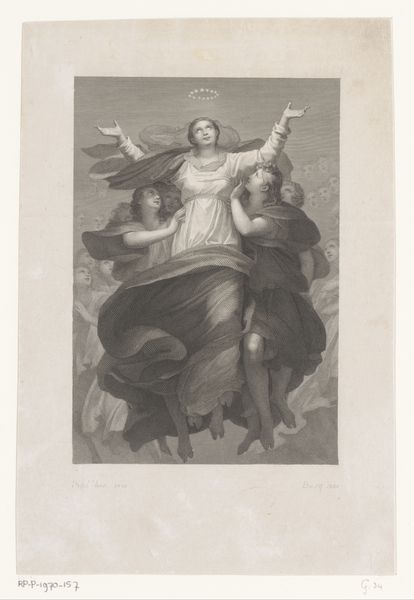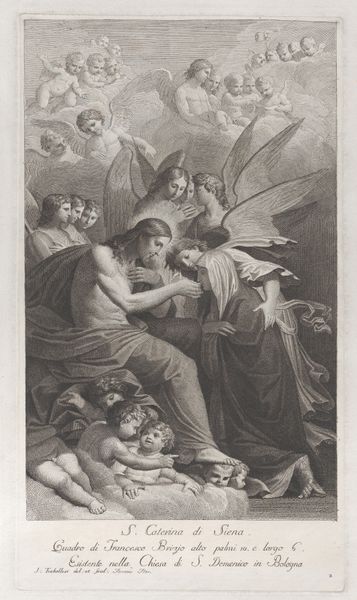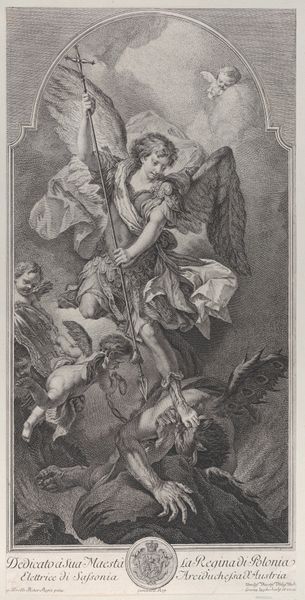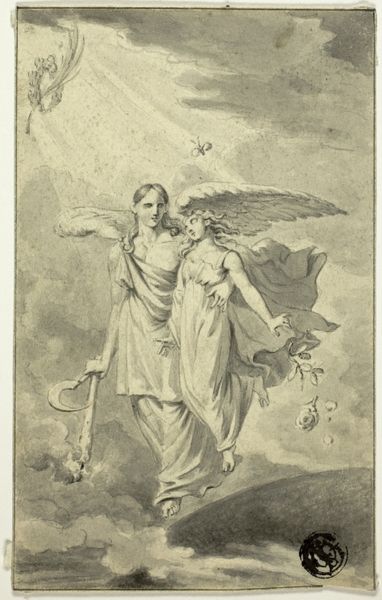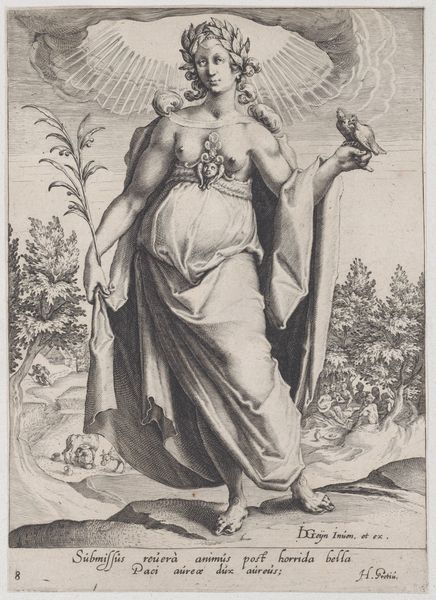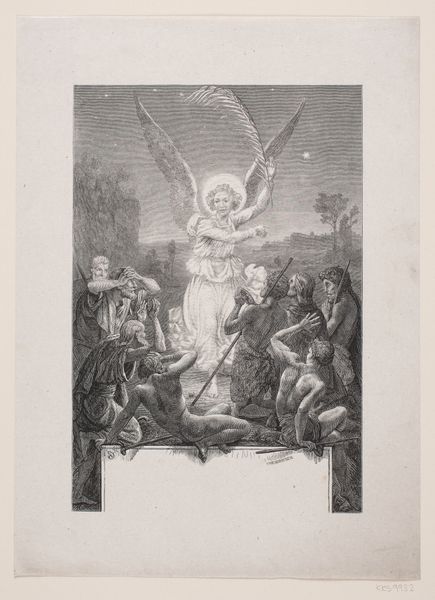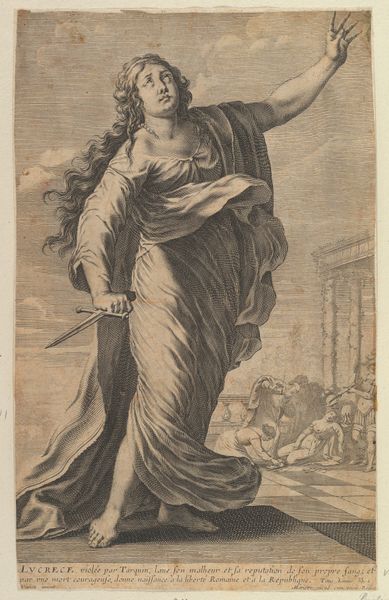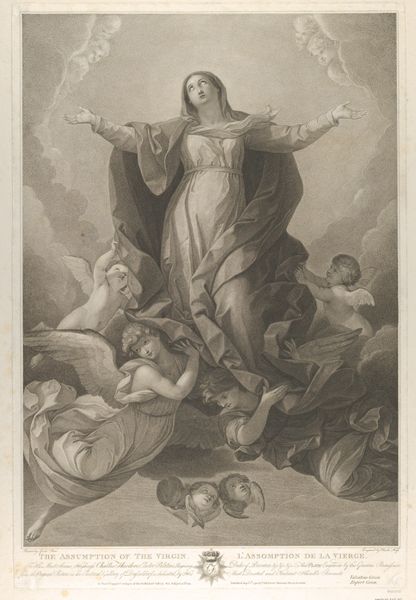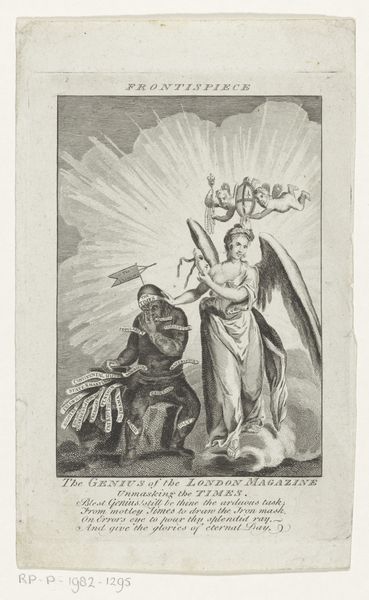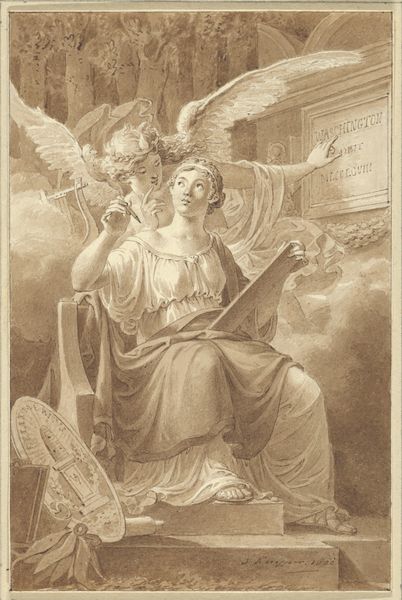
Copyright: Public Domain
Eugen Eduard Schäffer created this allegory of poetry in the 19th century. The piece reflects the influence of classical ideals during a time of significant social change, when the political landscape in Europe was undergoing dramatic shifts. The figure of poetry, wreathed in laurel, sits enthroned, flanked by cherubic figures holding tablets, she offers a book to the viewer. The serene face and flowing robes lend her an air of timeless grace. But look closer. She is more than just a symbol; she embodies the spirit of creativity and knowledge. During this period, art was often used to assert authority and communicate ideologies. This allegory invites us to consider the power dynamics inherent in representations of poetry and inspiration. Is this artwork meant to inspire and democratize, or does it present a more exclusive vision of art and culture? What does it mean to place poetry, a form of expression, on a pedestal?
Comments
No comments
Be the first to comment and join the conversation on the ultimate creative platform.
